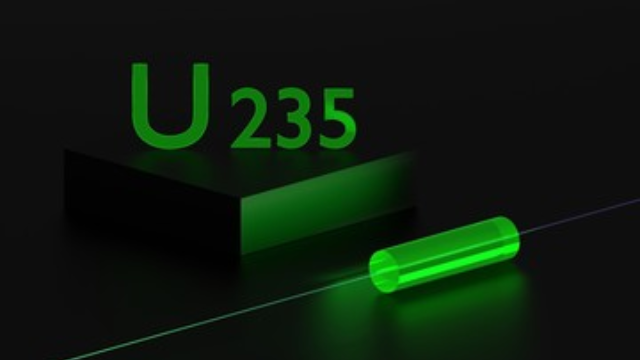You’ve seen it in movies – uranium glowing with an eerie green light. But is that Hollywood magic or a real phenomenon? You’re about to uncover the truth behind uranium’s alleged luminescence. We’ll delve into the science of radioactivity, debunk myths, and reveal the real implications of uranium’s properties. So buckle up, it’s time to illuminate your understanding of this widely misunderstood element.
Understanding Uranium’s Characteristics
You’ll find that uranium, a heavy metal with 92 protons, has several distinct characteristics, making it a unique element in the periodic table. This dense material, typically grey-black in color, is vital in uranium mining and pivotal in the production of nuclear fuel.
Uranium mining is a critical industry, extracting the ore from the earth before it’s processed into a useable form. It’s a process that demands precision and understanding of the element’s properties. The ore itself is often found in low concentrations, necessitating that large amounts of rock be processed to gather significant quantities.
Once processed, uranium becomes a crucial component for nuclear fuel. It’s in reactors where uranium truly shines, providing a reliable, albeit controversial, source of energy. Its atomic structure allows for a chain reaction, releasing energy as it decays. This energy heats water into steam, turning turbines to generate electricity.
Understanding uranium’s characteristics is key, particularly its radioactive nature, which poses challenges in mining and use. Despite this, it’s a significant resource, essential for our modern, energy-hungry world. From uranium mining to its role in nuclear fuel, uranium’s distinct features make it invaluable.
The Science of Radioactivity
Now, let’s delve into the science of radioactivity, a fascinating aspect of uranium that’s critical to its role in energy production. Uranium, like other radioactive elements, undergoes a process known as radioactive decay, which involves the emission of energy in the form of radiation.
Understanding the atomic structure of uranium is key to grasping how this process works. Uranium atoms are unstable due to their large number of protons and neutrons. This instability causes them to spontaneously break down, producing radiation in the process.
Radiation effects can be profound and diverse. On one hand, the energy produced by uranium decay can be harnessed for use in nuclear power plants. On the other hand, exposure to excessive levels of this radiation can be harmful, causing damage to living tissue and leading to health problems like cancer.
In short, the science of radioactivity is a complex interplay of atomic structure and radiation effects. It’s a risky but rewarding field, with the potential to provide us with a significant source of energy if handled with care and respect. So, while uranium may not glow in the typical sense, it certainly shines in its contribution to our energy needs.
Popular Depictions of Glowing Uranium
In countless films and TV shows, you’ve likely seen uranium depicted as a mysterious substance that glows bright green. This cinematic portrayal has significantly contributed to one of the most common uranium misconceptions. The truth is, uranium doesn’t glow, but the media’s depiction of it as a luminescent, ominous element is etched into our collective consciousness.
- Popular culture’s influence:
- Movies: In films like ‘Indiana Jones and the Kingdom of the Crystal Skull’, uranium sands glow ominously, reinforcing the misconception.
- Television: Shows like ‘The Simpsons’ feature glowing green rods of uranium, again perpetuating the myth.
The emotional response these depictions evoke is profound. The glowing green represents danger, mystery, and a dark allure. It’s a powerful visual tool, used to create tension and intrigue, but it’s not rooted in reality.
This disconnect between the cinematic portrayals and the actual properties of uranium highlights the importance of distinguishing fact from fiction. While uranium is indeed radioactive and potentially dangerous, the glowing green visualization is purely a product of our vivid imaginations and Hollywood’s creative license.
The Truth Behind Uranium’s Glow
Despite what you’ve seen in countless films and TV shows, uranium doesn’t actually emit a green glow in real life. This is one of the major Uranium Misconceptions that have been perpetuated over the years. In fact, in its natural state, uranium is a fairly unremarkable looking silvery-white metal. It’s this lack of observable radioactivity that initially allowed its dangerous properties to go unnoticed.
The Glow Phenomenon associated with uranium and other radioactive substances is actually due to the interaction of radiation with the surrounding air or other materials. This is where science meets the silver screen: the eerie green glow often depicted in media is a fabrication, a visual shorthand for radioactivity. In reality, this glow is more likely to be a bluish color, and only occurs under specific conditions, such as in a cloud chamber or near a strong radiation source.
Implications and Applications of Uranium’s Properties
Understanding these true characteristics of uranium, you might wonder about its real-world implications and applications. Primarily, uranium’s properties have two significant applications: uranium mining and nuclear energy.
- Uranium mining has both beneficial and harmful implications:
- On the positive side, it brings about economic development and job creation in mining regions.
- However, it also raises serious environmental and health concerns due to radiation exposure and waste management issues.
- Nuclear energy, where uranium plays a pivotal role, also has its pros and cons:
- It’s a potent source of energy, capable of powering cities and industries.
- Yet, the potential for nuclear accidents, like the Chernobyl and Fukushima disasters, can’t be overlooked.
These implications should make you think about the ethical and safety considerations linked to uranium’s use. The demand for energy is undeniable, but so is the need for sustainable and safe energy sources. As you grapple with the realities of uranium’s properties, you’re left to ponder about its role in our world. It’s clear that while uranium doesn’t literally glow, its impact on our lives and environment surely does.





